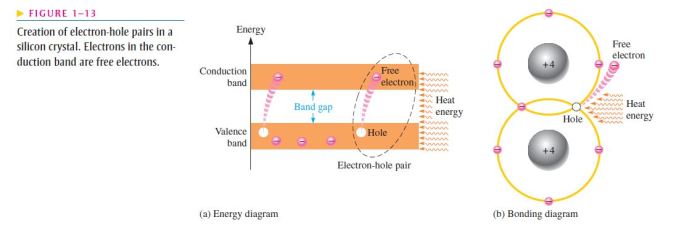- An intrinsic (pure) silicon crystal at room temperature has sufficient heat (thermal) energy for some valence electrons to jump the gap from the valence band into the conduction band, becoming free electrons;
- Free electrons are also called conduction electrons;
- This is illustrated in the energy diagram of Figure 1–13(a) and in the bonding diagram of Figure 1–13(b);

- When an electron jumps to the conduction band, a vacancy is left in the valence band within the crystal;
- This vacancy is called a hole;
- For every electron raised to the conduction band by external energy, there is one hole left in the valence band, creating what is called an electron-hole pair;
- Recombination occurs when a conduction-band electron loses energy and falls back into a hole in the valence band;
- To summarize, a piece of intrinsic silicon at room temperature has, at any instant, a number of conduction-band (free) electrons that are unattached to any atom and are essentially drifting randomly throughout the material;
- There is also an equal number of holes in the valence band created when these electrons jump into the conduction band. This is illustrated in Figure 1–14;
